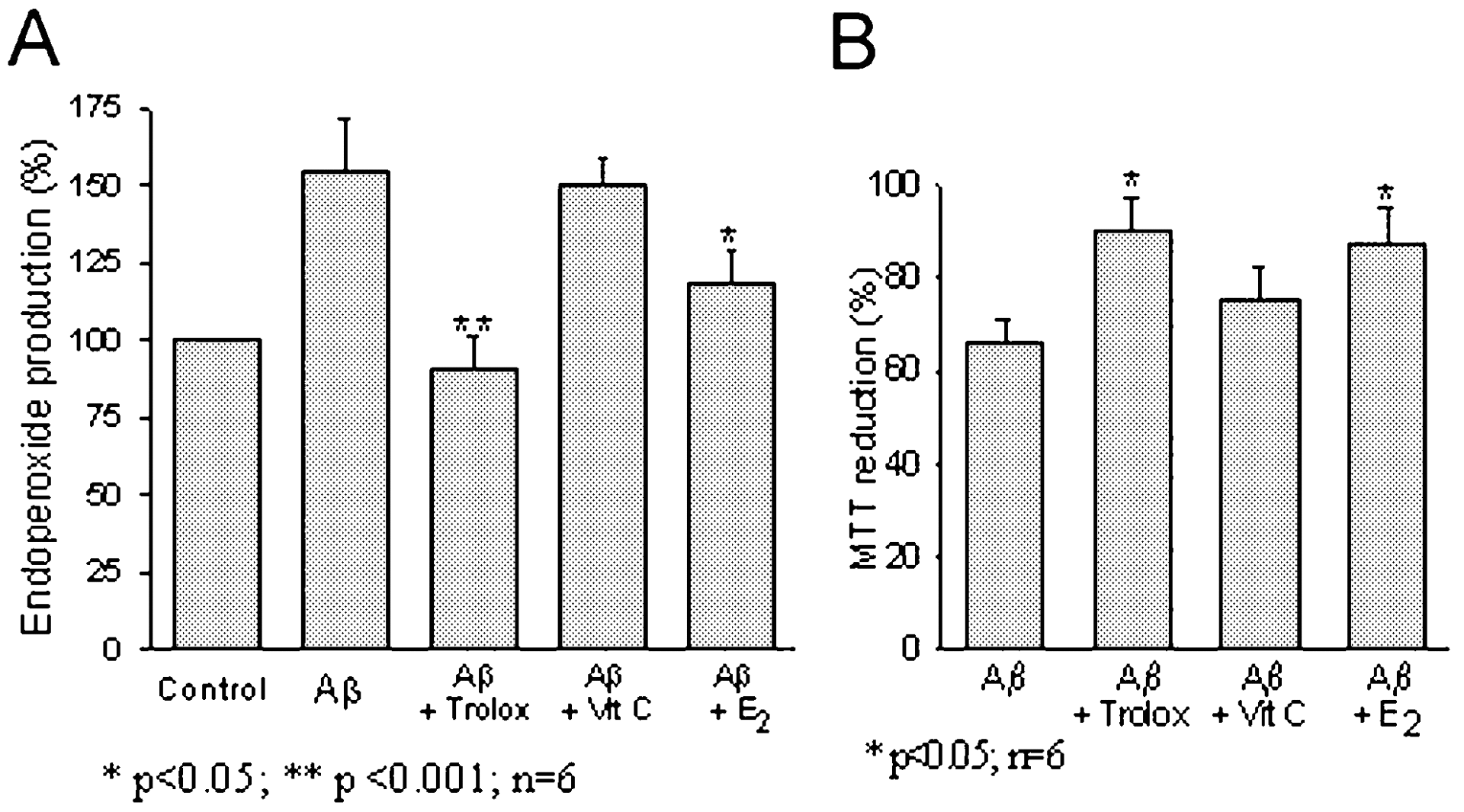Oxidative stress has been postulated as a key pathophysiological event in the amyloid β peptide (Aβ)-mediated neurotoxicity and provides the rationale for the testing of antioxidant molecules to reduce neurotoxicity of Aβ. In the present work, we have studied (1) the production of endoperoxide in primary cultures of rat embryo hippocampal neurons challenged with 10 µM amyloid-β peptide (Aβ) fibrils; (2) the effect of the antioxidants 17β-oestradiol (E2, 10 µM), trolox (100 µM; a hydrophilic derivative of vitamin E) and vitamin C (100 µM) on endoperoxide production elicited by Aβ, and (3) cell viability in response to Aβ or 100 µM H2O2 (used as a stimulus of oxidative stress) in the presence or absence of antioxidants.
Hippocampal neurons were obtained from 18-day-old Sprague-Dawley rat embryos anaesthetised by I.P. injection of ketamine and killed by cervical dislocation. Cell culture, cell viability (3-(4,5-dimethylthiazol-2-yl)-2,5-diphenyltetrazolium bromide (MTT) method), enzymatic assays (superoxide dismutase activity, SOD) and reactive oxygen species measurements were carried out as described previously (Muñoz et al. 1999, 2002).
Cells treated with Aβ fibrils showed an increased production of endogenous peroxide (P < 0.001) (Fig. 1A), and this increase was inhibited when cells were preincubated with trolox or with E2. No effects were observed in cells treated with Vit C in the presence of Aβ fibrils.
Our results also showed that E2 and trolox attenuated the neurotoxicity mediated by Aβ fibrils (Fig. 1B) while vitamin C failed to increase the cell survival of cells challenged with Aβ.
This work was funded by Distinció de la Generalitat de Catalunya and Fondo de Investigaciones Sanitarias (FIS 01/1029; Ministerio de Sanidad, España).

